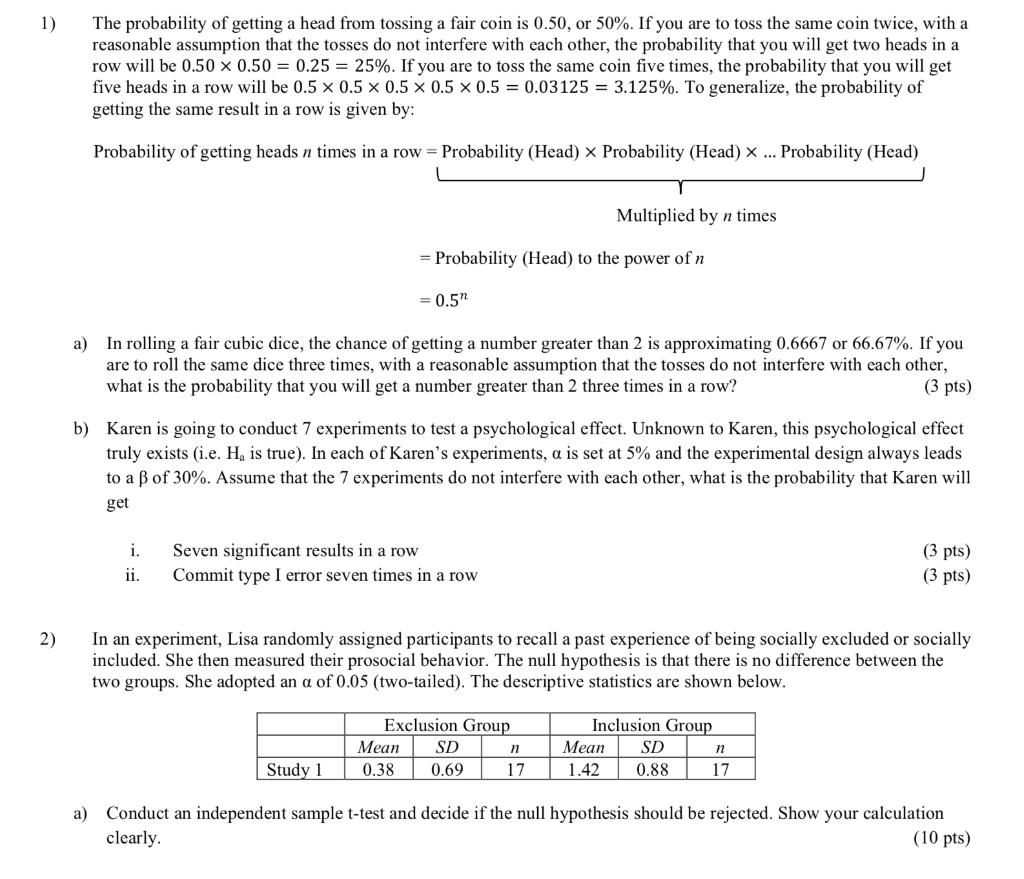Answered step by step
Verified Expert Solution
Question
1 Approved Answer
1) 2) The probability of getting a head from tossing a fair coin is 0.50, or 50%. If you are to toss the same

1) 2) The probability of getting a head from tossing a fair coin is 0.50, or 50%. If you are to toss the same coin twice, with a reasonable assumption that the tosses do not interfere with each other, the probability that you will get two heads in a row will be 0.50 x 0.50 = 0.25 = 25%. If you are to toss the same coin five times, the probability that you will get five heads in a row will be 0.5 x 0.5 x 0.5 x 0.5 x 0.5 = 0.03125 = 3.125%. To generalize, the probability of getting the same result in a row is given by: Probability of getting heads n times in a row = Probability (Head) x Probability (Head) x ... Probability (Head) a) In rolling a fair cubic dice, the chance of getting a number greater than 2 is approximating 0.6667 or 66.67%. If you are to roll the same dice three times, with a reasonable assumption that the tosses do not interfere with each other, what is the probability that you will get a number greater than 2 three times in a row? (3 pts) i. ii. b) Karen is going to conduct 7 experiments to test a psychological effect. Unknown to Karen, this psychological effect truly exists (i.e. Ha is true). In each of Karen's experiments, a is set at 5% and the experimental design always leads to a of 30%. Assume that the 7 experiments do not interfere with each other, what is the probability that Karen will get = Probability (Head) to the power of n = 0.5" Seven significant results in a row Commit type I error seven times in a row Study 1 Multiplied by n times. In an experiment, Lisa randomly assigned participants to recall a past experience of being socially excluded or socially included. She then measured their prosocial behavior. The null hypothesis is that there is no difference between the two groups. She adopted an a of 0.05 (two-tailed). The descriptive statistics are shown below. Exclusion Group SD 0.69 Mean 0.38 n 17 Inclusion Group Mean SD 1.42 0.88 (3 pts) (3 pts) n 17 a) Conduct an independent sample t-test and decide if the null hypothesis should be rejected. Show your calculation clearly. (10 pts)
Step by Step Solution
★★★★★
3.54 Rating (154 Votes )
There are 3 Steps involved in it
Step: 1
Question Q2 a Using the idea given we have the required probabili...
Get Instant Access to Expert-Tailored Solutions
See step-by-step solutions with expert insights and AI powered tools for academic success
Step: 2

Step: 3

Ace Your Homework with AI
Get the answers you need in no time with our AI-driven, step-by-step assistance
Get Started


